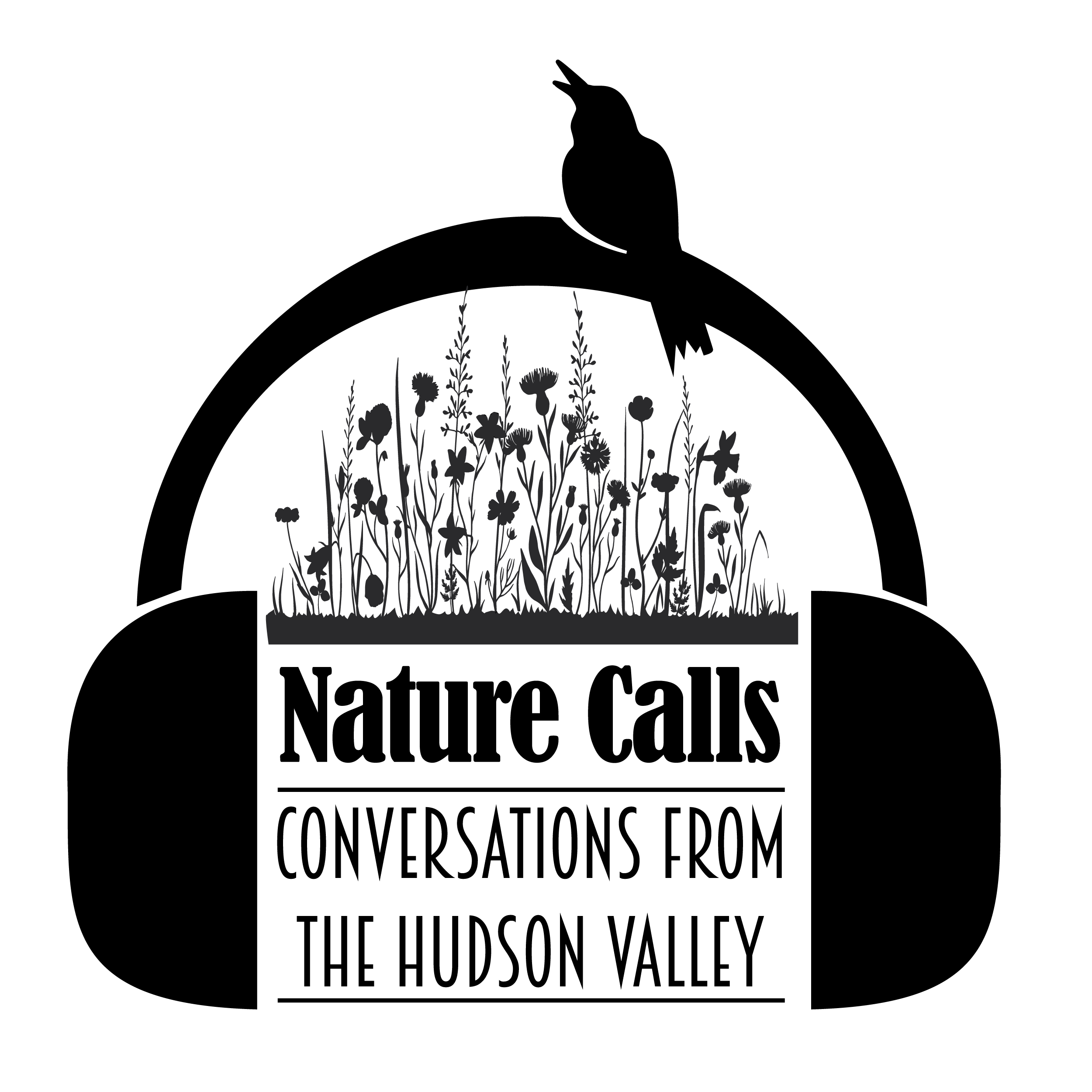Episodes
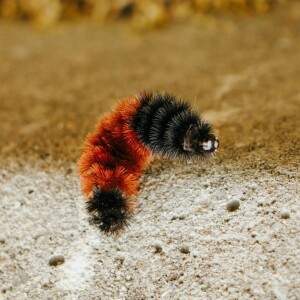
Thursday Oct 24, 2024
Episode 144: Hits and Myths Retrospective (Part 1)
Thursday Oct 24, 2024
Thursday Oct 24, 2024
According to the Merriam Webster dictionary, a myth is a popular belief or tradition that has grown up around something or someone. There are lots of myths associated with nature and gardening. A popular one is that the woolly bear caterpillar can predict the winter weather. Another is that plants like companions. And if you are a fan of the Farmer’s Almanac, I suspect you’ve heard about planting by the phases of the moon.
Are these myths based on science or hearsay? While there is a lot of science behind the natural world, not everything has been studied to determine if something is true. There are lots of reasons for this as science can be expensive as only ‘high priority’ items tend to get funded. Thus, many ‘myths’ continue to get handed down across the generations.
This episode is the first part of a 3-part ‘retrospective’ on Hits and Myths. It is a compilation of previously aired short segments on this subject. We’ve compiled them here for easier listening.
The first segment will explore whether your garden would be more productive if you planted by the phases of the moon. You may have heard that crops grown for their flowers or fruit are best planted during the waxing half of the moon cycle, when the moon gets brighter each night (from new moon to full moon). On the other hand, crops grown for their roots and tubers should be planted during the waning half of the moon cycle, when there is less moonlight each night (from the full moon to the next new moon). Does this really matter?
Next, learn about the wooly bear caterpillar, which is considered a natural indicator for predicting winter weather. (A narrow orange band is said to signal a snowy winter, which a wide band suggests a mild one.) Is there any science behind this?
The third segment focuses on companion planting, the idea that crops will grow better next to other specific plants. I suspect you’ve heard of the three sisters (corn, planted with squash, and beans), or that basil should be planted with tomatoes, or the marigolds will fend off insects in a vegetable garden. There actually is some science behind some of these common ‘companions’, but not necessarily all of them.
The last segment in this episode goes into why these myths persist. Learn about what goes into confirming or dispelling a myth and why so many of them persist.
We hope this episode is a ‘hit’ with you as you learn more about the science associated with these ‘myths’.
Host: Jean Thomas
Guests: Deven Russ and Jean Thomas
Photo by: University of Maine
Production Support: Linda Aydlett, Deven Connelly, Teresa Golden, Tim Kennelty, Xandra Powers, Annie Scibienski
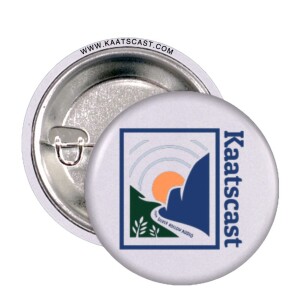
Thursday Oct 17, 2024
Episode 143: Kaatscast with Brett Barry
Thursday Oct 17, 2024
Thursday Oct 17, 2024
We, at Nature Calls: Conversations from the Hudson Valley, appreciate all of our listeners. Thank you for your support, feedback, and encouragement!
That said, everyone once in a while, we recognize that you might like to check out another special podcast that focuses on the Catskill Region. Kaatscast is an award-winning podcast that focuses on Catskill regional arts and culture, history, sustainability, local business interviews and more.
In this episode, the Nature Calls: Conversations from the Hudson Valley team interviewed Brett Barry, the host of Kaatscast, his biweekly podcast series about the heart of the Catskills. You can subscribe to Kaatscast for free wherever you get your podcasts, to experience what reviewers have called “delightfully informative” storytelling with “great production quality.” There’s a reason it was voted “Best Regional Podcast” 3 years in a row.
Brett hosts and produces Kaatscast from Silver Hollow Audio. He teaches podcasting and audio production in the Digital Media and Journalism department at SUNY New Patlz. Brett graduated from Syracuse University's television, radio and film program and worked as an associate documentary producer for several years before launching a career in voice-overs in 2002. He returned to Syracuse 10 years later for a graduate degree in television-radio-film. In addition to doing television and radio commercials, audiobooks, promos, and narration, he is also the host of public radio's 'Sound Beat', was the longtime voice of India's English-language network 'Zee Cafe', and the last announcer for the soap opera Guiding Light. He has narrated more than 125 audiobooks and is a proud member of SAG-AFTRA.
In this episode, you'll learn about the different approaches taken by Kaatscast and Nature Calls: Conversations from the Hudson Valley relative to content selection and production methods. Enjoy!
Hosts: Jean Thomas and Robin Smith
Guest: Brett Barry
Photo By:
Production Support: Linda Aydlett, Deven Connelly, Teresa Golden, Tim Kennelty, Xandra Powers, Annie Scibienski, Robin Smith
Resources
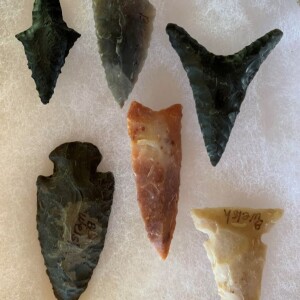
Wednesday Oct 09, 2024
Episode 142: Indigenous People
Wednesday Oct 09, 2024
Wednesday Oct 09, 2024
Justin Wexler returns to Nature Calls: Conversations from the Hudson Valley to share his vast wealth of knowledge about the Indigenous People who used to inhabit the Catskill Mountains and the surrounding area. Understanding the past practices employed by the native inhabitants, we can better steward our natural environment today.
When first encountered by European settlers, the Lenape were a loose association of closely related peoples who spoke similar languages and shared familial bonds in an area which spanned what is now eastern Pennsylvania, New Jersey, Lower Hudson Valley to the lower Catskills, and eastern Delaware. Many area locations are still referred to by names from these indigenous peoples. Hereditary leadership passed through the maternal line. They lived in several small towns along the rivers and streams that fed the waterways. Agricultural land was managed by women and allotted according to the subsistence needs of their extended families.
As Justin researched the history of the Hudson Valley and its occupants, he made connections with descendants of the Lenape, now dispersed to communities in Ontario, Wisconsin and Oklahoma. After befriending residents of those communities, he hosted Lenape people who came to visit their homeland. He continues to make links with organizations that would help represent their culture and history. Each weekend throughout the summer, Justin and his partner, Anna Plattner, invite visitors to the property, Wild Hudson Valley, to learn about edible plants, medicine, folklore, history, and both ancient and modern forest farming practices. They offer guided nature walks and workshops geared toward all ages. Their programs help both children and adults connect with nature.
Listen to this episode to reconnect with the culture of the Hudson Valley's native inhabitants and get inspired to learn more about nature, history, and wild foods.
Hosts: Teresa Golden and Jean Thomas
Guest: Justin Wexler
Photo by: Jean Thomas
Production Support: Linda Ayd
Resources
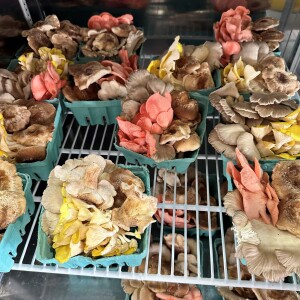
Thursday Oct 03, 2024
Episode 141: Mushrooms (Part 2)
Thursday Oct 03, 2024
Thursday Oct 03, 2024
John Michelotti rejoins the Nature Calls: Conversations from the Hudson Valley podcast to continue his mission to spread information about the incredible benefits of fungi, and their capacity to change the way we look at our relationships with each other and the world. John is the founder of Catskill Fungi, which produces health tinctures from fungi that are wild-crafted or grown on the Michelotti family farm in Big Indian, NY. John co-founded the Catskill Regional Mycoflora Project, serves as Medicinal Mushroom Committee Chair, and is a Poison Control Consultant for the North American Mycological Association.
He describes the various parts of a mushroom (e.g. gills, pores, teeth, etc.) that produce spores which are the way that fungi reproduce. He recommends that mushrooms be cooked for us to get the nutritional benefits. In addition to food uses, mushrooms can be used medicinally. Certifications are required to sell mushrooms commercially. People can become quite ill if they consume mushrooms that are not safe to eat. Some mushrooms can also be deadly. Traceability is key to understand the source of the mushrooms, especially when sold to restaurants.Foragers are encouraged to have liability insurance if they plan to sell mushrooms. Knowledge about how to identify mushrooms is key if you want to find mushrooms for personal use. Mushroom walks and conferences are great sources of information.
Fungi break down plants. Anything that is plant-based can potentially be decomposed by mushrooms and make good soil in the process. Conserving soil and habitat is key to protecting fungi in the future, especially with the risks of climate change. Understanding fungi brings us closer to better understanding the interconnection being all members of the universe.
Learn about the incredible benefits of fungi, and their capacity to change the way we look at our relationships with each other and the world. Get inspired to grow edible mushrooms as a source of fresh food, heal yourself by using the health properties of fungi, and explore the historic uses and present-day innovations of the fungal kingdom.
Hosts: Tim Kennelty and Jean Thomas
Guest: John Michelotti
Photo By: Teresa Golden
Production Support: Linda Aydlett, Deven Connelly, Teresa Golden, Xandra Powers, Annie Scibienski, Robin Smith

Thursday Sep 26, 2024
Episode 140: Mushrooms (Part 1)
Thursday Sep 26, 2024
Thursday Sep 26, 2024
A fungus is any member of the group of organisms that includes microorganisms such as yeasts and molds, as well as mushrooms. Fungi, like animals, acquire their food by absorbing dissolved molecules, typically by secreting digestive enzymes into their environment. Fungi do not photosynthesize. Growth is their means of mobility, with spores that may travel through the air or water.
Fungi are known as the principal decomposers in ecological systems. When a tree falls in the forest, whether someone hears it or not, the fungi get in there and excrete enzymes to break down the building blocks of wood. As they do this, they are extending out through the wood, breaking down certain things that bacteria can’t. Because of them we don’t have big stands of dead wood in the forest. They excrete enzymes and break down wood and other things too. They can take our human waste products, like coffee grounds, and break them down. We can grow healthy food from things we throw away, like cardboard, coffee grounds, paper – any kind of wood-based material. What’s left behind after the mushroom digests it is growable soil.
There are more fungi than there are animals and plants combined. Ninety percent of plant roots have mycorrhizal fungi attached in a symbiotic relationship, where the fungi is mining nutrients that the plant roots can’t reach and transferring those nutrients to the plant’s roots in order to keep that plant alive. Not only are they doing that to one plant, but they’re also interconnected between multiple plants.
Understanding this is changing the way scientists look at evolution. We used to look at the trees and say they’re fighting for sunlight, that they’re individualistic. In reality, there is a lot more cooperation under the soil. The species that cooperate with the most with other species are the ones that are thriving. This changes the way we look at our forests as well as how we treat other species.
A mushroom is the fleshy, spore-bearing fruiting body of a fungus, typically produced above ground, on soil, or on its food source. The name “mushroom” has been given to over 38,000 varieties of fungus that possess the same threadlike roots and cap. And, while mushrooms and toadstools (poisonous mushrooms) are not the most numerous or economically significant fungi, they are the most easily recognized.
Self-described “mushroom guy,” John Michelotti’s mission is to spread information about the incredible benefits of fungi, and their capacity to change the way we look at our relationships with each other and the world. He is the founder of Catskill Fungi, which produces the highest quality triple-extracted health tinctures from fungi that are wild-crafted or grown on the Michelotti family farm in Big Indian, NY. Their aim is to empower people to grow edible mushrooms as a source of fresh food, to heal themselves through utilizing health properties of fungi, and to explore the historical uses and present-day innovations of this exceptional fungi kingdom.
As former President of the Mid-Hudson Mycological Association (MHMA), John co-founded the Catskill Regional Mycoflora Project as well as the Gary Lincoff Memorial Scholarship. He serves as Medicinal Mushroom Committee Chair and is a Poison Control Consultant for the North American Mycological Association. He is an instructor for the Wild Mushroom Food Safety Certification courses in NY. He was chosen by the Catskill Center as a "Steward of the Catskills" for his contribution to the environment. He served on the Mushroom Advisory Panel for Certified Naturally Grown to develop ecological standards in mushroom production. John has presented at the New York Botanical Gardens, Telluride Mushroom Festival, and North American Mycological Association Annual Foray, as well as several colleges and universities.
Listen to John on Nature Calls: Conversations from the Hudson Valley, learn about mushrooms and get inspired to work with fungi to improve your health, community, and the environment.
Hosts: Tim Kennelty and Jean Thomas
Guest: John Michelotti
Photo by: Catskill Fungi
Production Support: Linda Aydlett, Deven Connelly, Teresa Golden, Xandra Powers, Annie Scibienski, Robin Smith
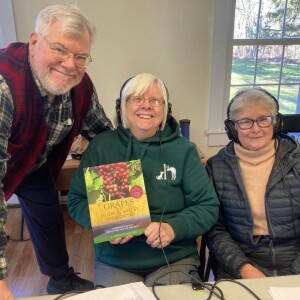
Thursday Sep 19, 2024
Episode 139: Wines of the Hudson Valley
Thursday Sep 19, 2024
Thursday Sep 19, 2024
Wine is an alcoholic drink made from fermented fruit. Yeast consumes the sugar in the fruit and converts it to ethanol and carbon dioxide, releasing heat in the process. Wine is most often made from grapes, and the term "wine" generally refers to grape wine when used without any qualification. But note that, wine can be made from a variety of fruit crops, including plum, cherry, pomegranate, blueberry, currant, and elderberry. Different varieties of grapes and strains of yeasts are major factors in different styles of wine. These differences result from the complex interactions between the biochemical development of the grape, the reactions involved in fermentation, the grape's growing environment, and the wine production process.
Like most of New York, the Hudson Valley is home to many grape varieties, including Cabernet Franc, Gamay, Syrah, and Albariño. Hybrid varieties like Noiret, Chelois, Seyval, and Baco Noir are also popularly grown throughout the area. The unique climate and soil are particularly beneficial for Native American, French American, and European grape varieties.
J. Stephen Casscles rejoins the Nature Calls: Conversations from the Hudson Valley podcast as he talks about Wines of the Hudson Valley. He is a grape grower, winemaker and author, from Athens, NY, (Greene County) after an illustrious career as an attorney. In addition, he lectures on wine, grape cultivation, 19th century American horticulture and landscape architecture at botanical gardens and historical societies throughout New York and New England.
In today’s episode, Steve talks about his book Grapes of the Hudson Valley which includes a description of some of the basics of wine production. This can be challenging as the grape variety and the current year’s weather (both winter and summer) can influence the sustainability and sweetness of the grapes. He touches upon the wide range of dessert wines on the market and where they are made. He also focuses on the people beyond the hybridizers. Due to the wide variety of grapes grown in New York, wine producers can produce a wide variety of hybrid wines.
Listen to this episode and learn about the science and ‘art’ behind wine production.
Hosts: Jean Thomas and Robin Smith
Guest: Steve Casscles
Photo by: Teresa Golden
Production Support: Linda Aydlett, Deven Connelly, Teresa Golden, Xandra Powers, Annie Scibienski, Robin Smith

Thursday Sep 12, 2024
Episode 138: Patch to Plate Retrospective (Part 3)
Thursday Sep 12, 2024
Thursday Sep 12, 2024
Annie Scibienski is back with another Patch to Plate Retrospective episode. Once again, she talks about a variety of ways to prepare ingredients from your home garden or your local farmer’s market in your own kitchen. Today’s previously aired short segments feature corn, melons, peppers, tomatoes and a range of brassica vegetables.
Corn on the cob, fresh-picked from the garden, farm stand or farmer’s market, is a delightful summertime treat. Many Americans think of it as an American barbecue staple, but corn is actually a global food. Annie, she talks about corn and everything that goes well with it. The long list of options will make your taste buds clamor for it. Fire roasted corn salad anyone?
Melons are the topic of discussion on the second segment. This category includes watermelons, honeydews, and cantaloupes. A great resource, Vegetable Varieties of New York State, published by Cornell University, provides a list of vegetables and fruits (including melons) that are rated highly to grow well in New York State. Get your taste buds watering with descriptions of recipes for watermelon salad, watermelon pickles, and grilled cantaloupe.
The next segment features Peppers and Tomatoes. Annie shares her cooking and gardening expertise with these flavorful Hudson Valley Garden favorites. Discover the joys of growing and enjoying both tomatoes and peppers and how these garden favorites can be the stars of your menu planning. She discusses their unique qualities and offers valuable insights into incorporating them into your meals. If you're looking for inspiration or are looking for a simple, under-30-minute dinner ideas, Annie has you covered with delicious recipes you won't want to miss.
This episode ends with a segment about brassicas. Annie talks about a variety of ways to cook cabbage, cauliflower and broccoli. Awaken your taste buds with her descriptions of recipes involving these popular vegetable varieties.
Host: Jean Thomas
Guest: Annie Scibienski
Photo by: Teresa Golden
Production Support: Linda Aydlett, Deven Connelly, Teresa Golden, Xandra Powers, Annie Scibienski
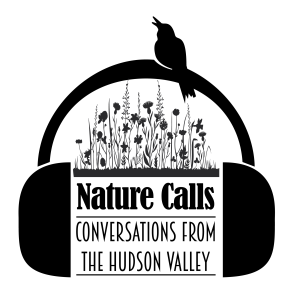
Thursday Sep 05, 2024
Episode 137: Patch to Plate Retrospective (Part 2)
Thursday Sep 05, 2024
Thursday Sep 05, 2024
In Part 2 of our Patch to Plate Retrospective series, Annie Scibienski is back with four previously aired short segments all about using ingredients from your home garden in your home kitchen. This time, however, they are all in one place.
Up first, Annie Scibienski shares her wealth of knowledge on all things asparagus. From growing to cooking and preserving, she provides some great tips to help you make the most out of this delicious perennial vegetable. She suggests different cooking methods, including blanching, grilling, and stir-frying, and shares some mouth-watering recipes like Pan Roasted Asparagus and Asparagus Quiche without crust. So, if you're a fan of asparagus or want to learn more about this nutritious and flavorful vegetable, don't miss this segment!
Next hear all about a wide variety of tender greens that can be grown in spring gardens in the Hudson Valley. You probably know all about lettuce, but arugula and spinach are also great spring greens that are fun to grow, cook and eat! Listen and gain some new tips and techniques.
The focus of the third segments is on hardy greens like kale, Swiss chard, and broccoli rabe. Get out the olive oil and garlic to enjoy these veggies. Do you know how to massage kale for a delicious salad? Interested in learning about what ingredients go well with Swiss chard or broccoli rabe? If so, this segment is for you.
Finally, learn about a wide range of ways to prepare zucchini and summer squash, some simply using your pantry staples, while others are more creative. If you’d like to know how to cook squash blossoms, make frittatas, or serve it with eggs or rice, this segment is for you. Your mouth will be watering!
Host: Jean Thomas
Guest: Annie Scibienski
Photo by: Teresa Golden
Production Support: Linda Aydlett, Deven Connelly, Teresa Golden, Xandra Powers, Annie Scibienski
Resources

Thursday Aug 29, 2024
Episode 136: Patch to Plate Retrospective (Part 1)
Thursday Aug 29, 2024
Thursday Aug 29, 2024
It’s harvest time and also time for some more retrospective episodes. These are a series of previously aired short segments on a common subject that have been packaged together for easier listening. In this case, it’s all about Patch to Plate, which provides lots of ideas on how to prepare all the fresh produce from your garden and/or local farmer’s market and make delicious meals in your home kitchen. Annie Scibienski, discusses how to prepare multiple seasonal vegetables to awaken your taste buds.
The first segment features root vegetables such as radishes, beets, carrots, etc. Carrots love butter, sugar, lemon, maple sugar, etc. Maple- glazed carrots anyone? Similarly, have you ever heard of a hidden beet pound cake that uses pureed beets to add nutrition to a basic cake recipe? Annie provides lots of tips on how to do this and what to check for to ensure that the batter is just right.
The next segment focuses on winter squash (e.g. butternut, acorn, honeynut, etc.), and cabbage. These squashes are delicious served roasted, or in soups. Sage, onion, garlic, and salt, butter, nutmeg, lemon, lime, can complement and enhance the squash flavor. Cabbage wedges can be roasted. There are easy ways to prepare cabbage which can then be served with walnuts and/or toasted seeds.
The third segment features winter vegetables like sweet potatoes, onions and dried beans. Annie describes a recipe that combines all three of these ingredients that goes great with pasta. Garlic, onion, chili peppers, and dairy (cheese, butter, etc.) complement these main ingredients. But they can also be used to create delicious scones. One of the keys to success is to ensure that each scone is of a consistent size so that they bake at the same rate.
The fourth segment in this episode focuses on potatoes. Annie talks about the nutritional benefits of potatoes, as well as the need to focus on serving size. There are lots of different types of potato, including starchy potatoes for baking, or others for general purpose uses. She provides lots of great tips on how to successfully bake potatoes so that they have a crispy skin and a nice, fluffy interior. Tips including not wrapping them in foil or microwaving them to avoid steaming them. Listen to her suggestions on ingredients to combine potatoes with and let your imagination savor the flavors.
Host: Jean Thomas
Guest: Annie Scibienski
Photo by: Teresa Golden
Production Support: Linda Aydlett, Deven Connelly, Teresa Golden, Xandra Powers, Annie Scibienski

Thursday Aug 22, 2024
Episode 135: Nutrition
Thursday Aug 22, 2024
Thursday Aug 22, 2024
At the most basic level, nutrition is about eating a regular, balanced diet. Good nutrition helps fuel your body. The foods you eat supply the nutrients your body needs to maintain your brain, muscle, bone, nerves, skin, blood circulation, and immune system. Proper nutrition also helps protect you from illness and disease, such as heart disease, diabetes, cancer, and osteoporosis.
For optimal health, science supports following a plant-based diet like the Mediterranean-DASH (Dietary Approaches to Stop Hypertension) diet or MIND (Mediterranean-DASH Diet Intervention for Neurodegenerative Delay) diet. Plant-based diets have been shown to have various health benefits and are linked with a lower risk of heart disease, cancer, and other chronic illnesses. As a general rule, these diets tend to recommend:
- Eating plenty of vegetables, fruits, and whole grains
- Choosing fat-free or low fat dairy products, fish, poultry, beans, nuts and vegetable oils
- Limiting saturated and trans fat intake, such as fatty meats and full-fat dairy products
- Limiting drinks and foods that contain added sugars
- Restricting sodium intake while increasing consumption of potassium, magnesium and calcium
Following a healthy diet has many benefits, including building strong bones, protecting your heart, preventing disease, and boosting your mood. A healthy diet typically includes nutrient-dense goods from all of the major food groups including lean proteins, whole grains, healthy fats, and fruits and vegetables of many colors. Healthy eating habits also include replacing foods that contain trans fats, added salt, and sugar with more nutritious options.
Rebecca Polmateer, Program Director, Cornell Cooperative Extension of Columbia and Greene Counties, rejoins the Nature Calls: Conversations from the Hudson Valley podcast to talk about good nutrition and the programs and resources that are available to help residents eat healthy. Listen as she describes how to find the most nutritious foods starting with fresh local produce, frozen vegetables, fresh produce from more distant locations, followed by canned foods. Whole foods are always better than packaged/processed ones. ‘Superfoods’ (e.g. blueberries, quinoa, etc.) tend to be packed with more vitamins. Lean meats are also preferable. She also talks about the importance of food labels on packaged foods.
There are multiple governmental programs that can help ensure your family gets good nutrition. The Supplemental Nutrition Assistance Program (SNAP) issues electronic benefits that can be used like cash to purchase food. SNAP helps low-income working people, senior citizens, the disabled and others feed their families. New York State also offers a special supplemental nutrition program for Women, Infants and Children (WIC) which offers nutrition education, breastfeeding support referrals, nutritious foods.
We’re wishing you more thoughtful and healthy diets in the future!
Hosts: Tim Kennelty and Jean Thomas
Guest: Rebecca Polmateer
Photo by: MyPlate Graphics | MyPlate
Production Support: Linda Aydlett, Deven Connelly, Teresa Golden, Xandra Powers, Annie Scibienski

